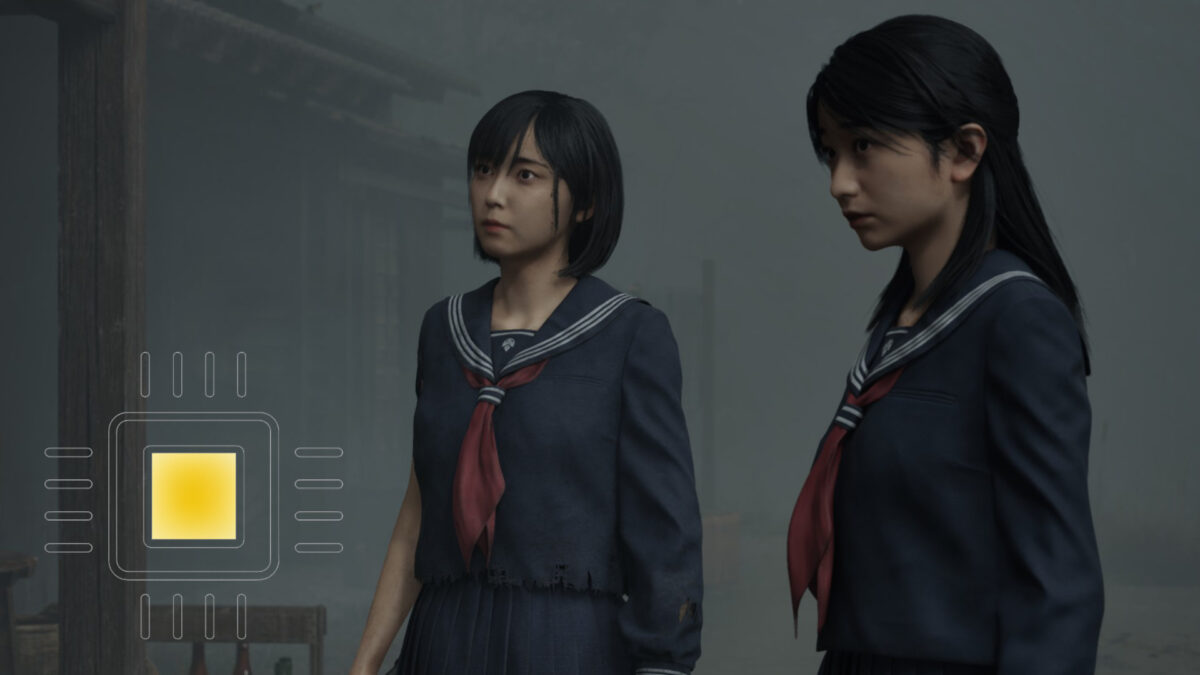Silent Hill f is built on Unreal Engine 5 and nails the eerie atmosphere. But on every platform, technical compromises are apparent. Upscaling and resolution in particular have sparked debate.
Silent Hill f, the latest entry in the long-running horror series, launches in September 2025 for PlayStation 5, PC, and Xbox Series X/S. Technically, it uses Unreal Engine 5 with software-based Lumen lighting, Virtual Shadow Maps, and Nanite. But despite these modern tools, performance varies. Depending on the platform, there are clear differences in image quality, frame stability, and internal resolution. We’ve gathered reports and broken them down for you.
Silent Hill f on PC: Solid foundation, familiar UE5 issues
On PC, you’ll benefit most from modern hardware and upscaling. DLSS 4 (Nvidia) and FSR 4 (AMD) are supported, but frame generation is not. At 1440p, a RTX 4070 or RX 7900 XT can deliver stable 60 FPS on high settings with upscalers enabled. For smooth 4K, you’ll want at least a RTX 4080. Without upscaling, framerates drop noticeably.
The main sticking point is shader compilation. Preloading shaders at launch only takes seconds, but you’ll still encounter stutters while playing, especially when moving between areas. This traversal stutter affects even high-end systems. Ray tracing isn’t supported; lighting is handled by software Lumen.
The game’s fog-heavy art style works in its favor: soft edges from upscaling are less distracting, though animations can feel stiff. For stable performance, keep upscalers on and stick to high presets.
PS5 & PS5 Pro: Two modes, no clear winner
On PlayStation 5, you can choose between two graphics modes. Performance mode targets 60 FPS and usually achieves it, but at the cost of clarity. Internal render resolution can dip as low as 360p–720p, upscaled to around 1800p using PSSR (PlayStation Spatial Super Resolution). The result: a noticeably soft image, especially compared to native 4K.
Quality mode offers a sharper overall image (1440p internal, upscaled to 4K), but is capped at 30 FPS. Occasional streaming hitches remain. Fog looks especially effective on PS5, and overall, the version appears slightly smoother than on Xbox.
PS5 Pro adds a hybrid mode targeting 60 FPS, but it still uses low internal resolutions (720p–1080p) with PSSR. Upscaling artifacts are more noticeable, and image quality doesn’t meaningfully improve over the base PS5. No real advantage here.
Xbox Series X/S: Less soft, but not flawless
On Xbox Series X, two modes are also available. Performance mode usually delivers stable 60 FPS, with internal resolution comparable to the PS5 (about 720p–1080p). Quality mode hits up to 1440p at 30 FPS. Colors can appear oversaturated, and fog effects don’t quite match the PS5 version.
Technical hiccups are rare, though minor drops into the mid-50s can happen. Thanks to the game’s slower pace, they’re not too disruptive. Series S, however, only offers a 30 FPS mode with further reduced resolution and much blurrier visuals.
Performance verdict for Silent Hill f
Silent Hill f delivers a chilling atmosphere across all platforms, but the technical side has its flaws. On PC, with modern hardware and upscaling, you’ll get the best balance of visuals and framerate. PS5 offers solid performance but suffers from extremely low render resolutions in performance mode. PS5 Pro doesn’t really improve things. Xbox Series X holds steady overall but looks a bit less polished. Series S comes with clear limitations.
For the smoothest experience, stick with performance mode despite softer visuals. If you prefer sharper images, you’ll have to accept lower framerates. On every platform, upscaling tech makes a big difference.
Sources: ComputerBase, 80.lv, Reddit, GamePro, PureXbox, Dbltap











